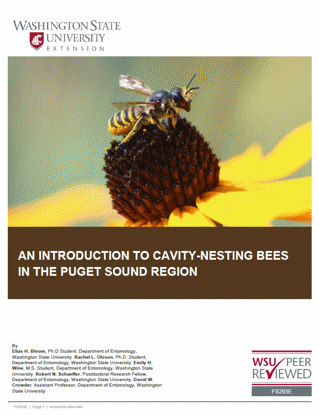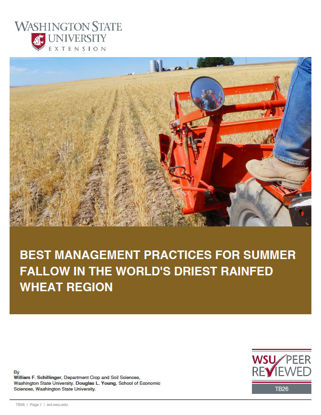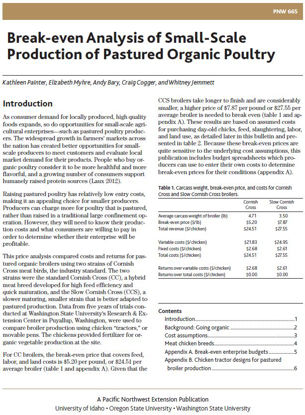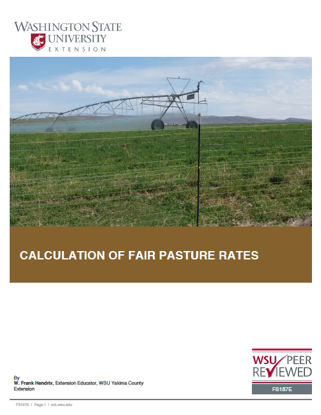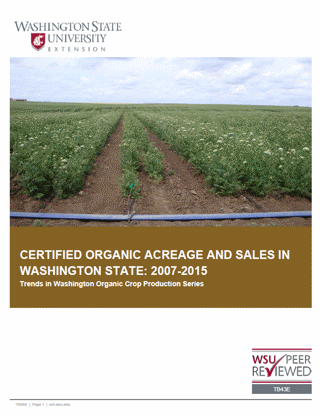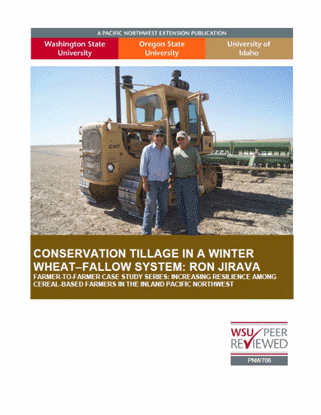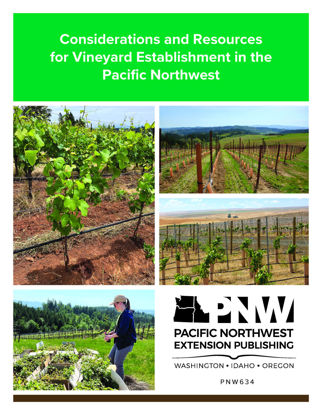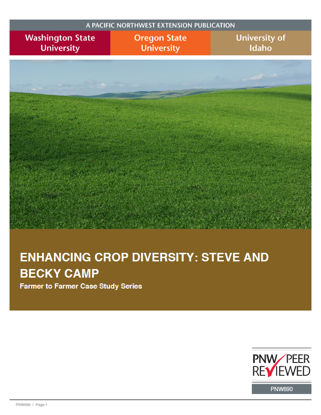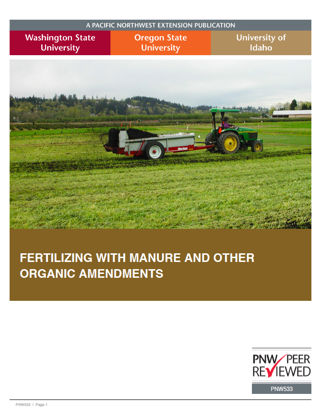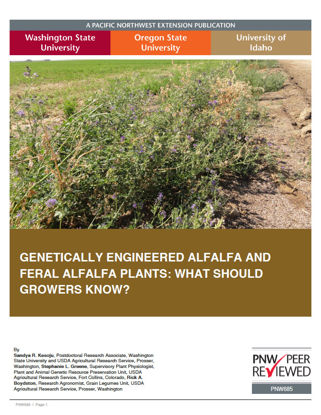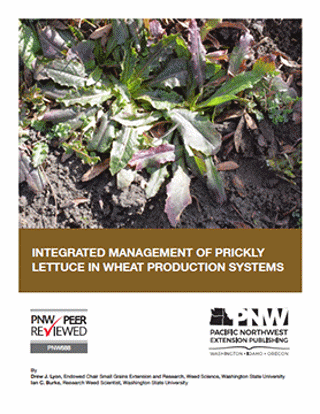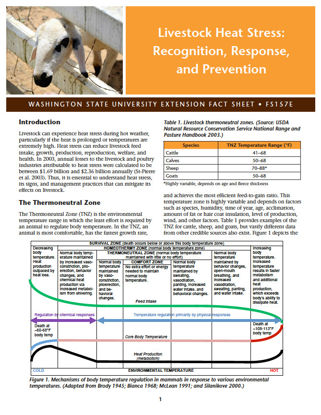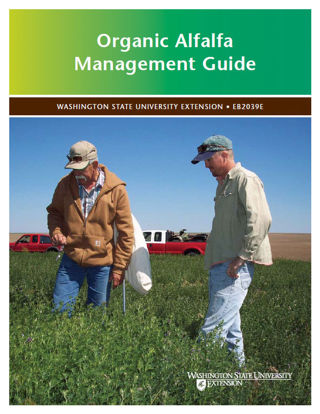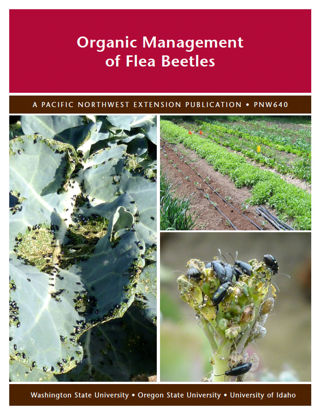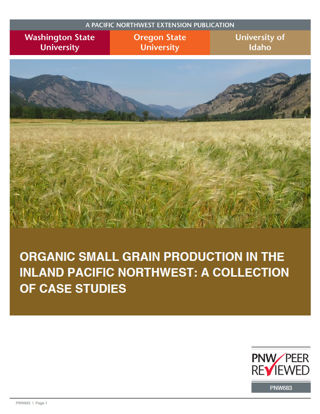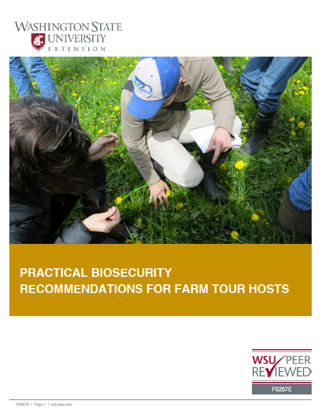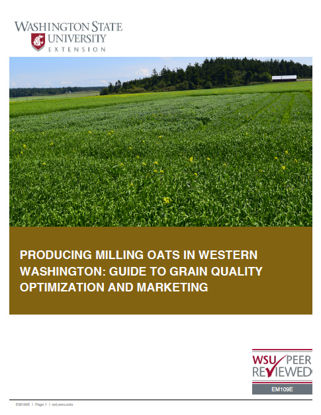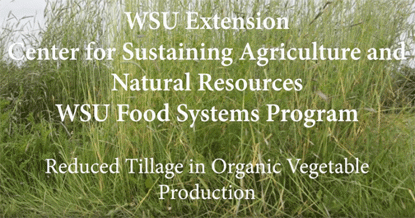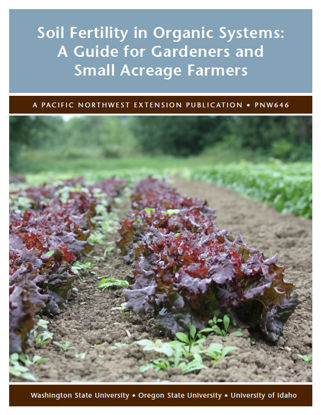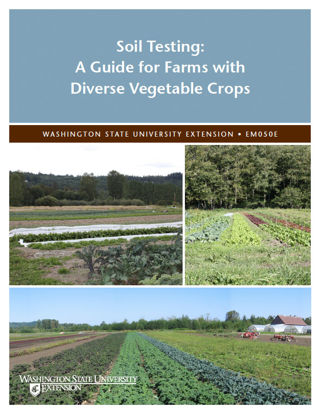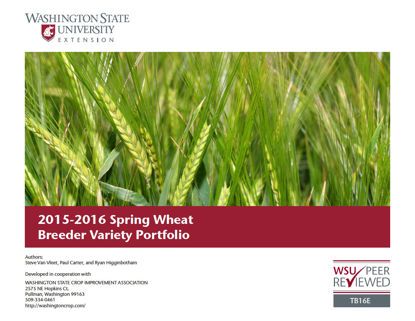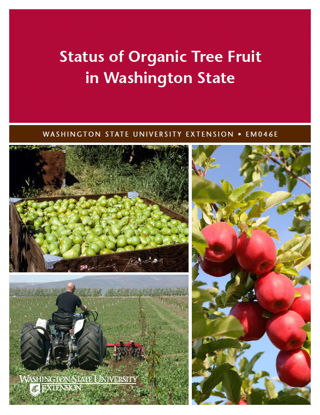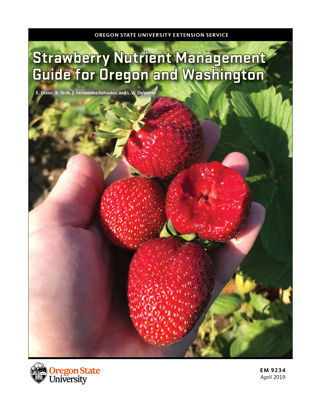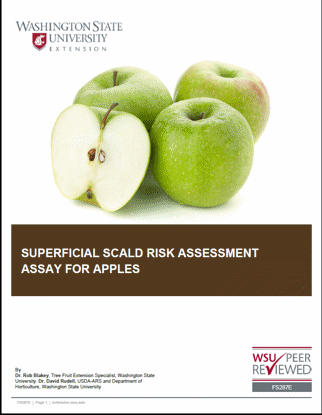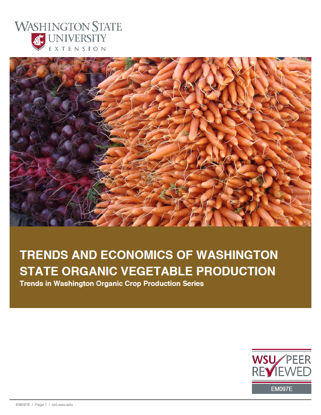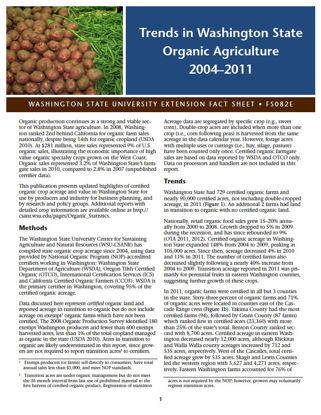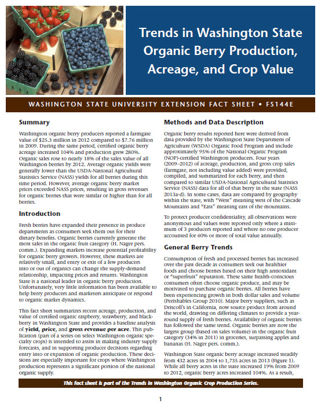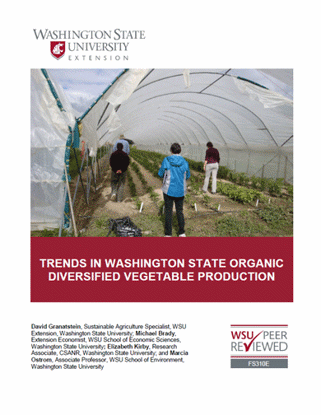You have no items in your shopping cart.
Organic Production
Organic Production
An Introduction to Cavity-Nesting Bees in the Puget Sound Region (Home Garden Series)
Learn to harness a variety of wild bees in your backyard using these simple and effective methods. ...
$0.00
Best Management Practices for Summer Fallow in the World's Driest Rainfed Wheat Region
Wind erosion from excessively tilled soils is a severe problem, especially in south-central Washington. Tillage of fallow land in the world’s driest rainfed wheat production region is considered neces ...
$0.00
Break-even Analysis of Small-Scale Production of Pastured Organic Poultry
Data from five years of trials at Washington State University were used to compare costs and returns for pastured organic broilers using two strains of Cornish Cross meat birds, the industry standard. ...
$0.00
Calculation of Fair Pasture Rates
When a pasture is to be rented for grazing, there are several different methods that can be used when setting the pasture rental rate. This publication discusses three methods of establishing a pastu ...
$0.00
Certified Organic Acreage and Sales in Washington State: 2007-2015
WSU CSANR has compiled state organic crop acreage statistics since 2004, using certifier data, to provide annual updates containing current, detailed information for use in farm and business planning, ...
$0.00
Conservation Tillage in a Winter Wheat - Fallow System, Ron Jirava (Farmer-to-Farmer Case Study Series)
Ron Jirava’s approach to conservation tillage helps his farm to remain economically viable. Learn more in this farmer-to-farmer case study. ...
$0.00
Considerations and Resources for Vineyard Establishment in the Inland Pacific Northwest
Vineyard establishment requires careful planning and implementation. This guide is designed to help you through the initial questions and considerations before establishing a new vineyard.
$0.00
Enhancing Crop Diversity: Steve and Becky Camp (Farmer to Farmer Case Study Series)
Steve and Becky Camp farm near LaCrosse, Washington, in an area receiving about 12–14 inches of annual precipitation. In this publication, the Camps discuss their strategy for diversifying and intensi ...
$0.00
Fertilizing with Manure
Are you thinking about using manure to fertilize your farm but want more information? Properly managed manure applications recycle nutrients to crops, improve soil quality, and protect water quality. ...
$0.00
Genetically Engineered Alfalfa and Feral Alfalfa Plants: What Should Growers Know?
Alfalfa is the world’s most important forage crop, and the western US is its most important production area. Feral alfalfa is common and can potentially lower the genetic purity of alfalfa seed and cu ...
$0.00
Integrated Management of Prickly Lettuce in Wheat Production Systems
Prickly lettuce is a common weed in wheat production systems throughout the PNW, but it’s difficult to manage. Herbicides can control prickly lettuce in wheat, but many biotypes have developed resistance.
$0.00
Management Practices to Mitigate Livestock Heat Stress
Livestock can experience heat stress during hot weather, particularly if the heat is prolonged or temperatures are extremely high. Heat stress can reduce livestock feed intake, growth, production, rep ...
$0.00
Organic Alfalfa Management Guide
Looking to switch to organic alfalfa production? This management guide details the considerations and procedures for doing so. Organic alfalfa producers must follow rules established by USDA Nation ...
$0.00
Organic Management of Flea Beetles
Flea beetles are common garden pests found throughout the Pacific Northwest. Flea beetle feeding on plants in the Brassicaceae and Solanaceae families can scar foliage and potato tubers, leading to re ...
$0.00
Organic Small Grain Production in the Inland Pacific Northwest: A Collection of Case Studies
Organic farming can be a challenge anywhere, but the obstacles encountered by Inland Pacific Northwest organic small grain farmers are unique. Their options for managing weeds and soil nutrients are f ...
$0.00
Practical Biosecurity Recommendations for Farm Tour Hosts
This publication was written for livestock producers who would like to open their farms to the public for tours or educational workshops, yet reduce disease risks potentially associated with such visi ...
$0.00
Producing milling oats in western Washington: Guide to grain quality optimization and marketing
Oats represent an interesting opportunity for producers in western Washington both to diversify their rotations and strengthen local food systems. This publication introduces milling oat quality speci ...
$0.00
Reduced Tillage in Organic Vegetable Production
This video covers the concept of reduced tillage organic agriculture, cover crop and weed management, and specialized equi ...
$0.00
Soil Fertility in Organic Systems: A Guide for Gardeners and Small Acreage Farmers
This publication discusses the many types of fertilizers and soil amendments available for organic plant production. Fertilizer formulations, nutrient availability, and application practices for commo ...
$0.00
Soil Testing: A Guide for Farms with Diverse Vegetable Crops
Soil analysis can guide farmers and gardeners in making
soil amendment and soil management decisions. Making soil sampling an annual event will allow for tracking management practices and influencing ...
$0.00
Spring Wheat Breeder Variety Portfolio
With so many spring wheat varieties, how do you choose? If you’re a grower, small grain seed dealer, or agriculture industry fieldman, this annual spring wheat variety portfolio can be a valuable reso ...
$0.00
Status of Organic Tree Fruit in Washington State
Certified acres of organic apples, pears and cherries in Washington State increased at a slower rate in 2009 than in previous years. Reported transition acres decreased for all tree fruit signaling a ...
$0.00
Strawberry Nutrient Management Guide for Oregon and Washington
Strawberry growers in Oregon and Washington raise fruit for both the processed and fresh markets, using both conventional and certified organic systems. This guide explains nutrient management for Jun ...
$0.00
Superficial Scald Risk Assessment Assay for Apples
The aim of this publications is to rank apple storage rooms for the risk of superficial scald development by quantifying the conjugated trienols (oxidation product that causes scald symptoms) in the p ...
$0.00
Trends and Economics of Washington State Organic Vegetable Production
Washington State is a leading producer of organic vegetables in the U.S. -- specifically for sweet corn, green peas, snap beans, potatoes, onions, and carrots. In this publication, prospective and cu ...
$0.00
Trends in Washington State Organic Agriculture - 2008
This fact sheet summarizes 2008 certification data gathered for organic agriculture in Washington, including acreages and sales for forage, vegetables, and tree fruit. Color graphs illustrate a genera ...
$0.00
Trends in Washington State Organic Agriculture 2004-2011
Organic agriculture expanded rapidly in Washington state from 2004-2009 due to growing consumer demand. The recession years slowed growth nationally and this was reflected in a decline in acreage in t ...
$0.00
Trends in Washington State Organic Berry Production, Acreage, and Crop Value
Washington State is a national leader in organic berry production. This fact sheet summarizes recent acreage, production, and value of certified organic raspberries, strawberries, and blackberries in ...
$0.00
Trends in Washington State organic diversified vegetable production
Better understand the characteristics of certified organic producers in Washington through this insightful analysis and discussion, here. ...
$0.00
Using Biodegradable Plastics as Agricultural Mulches
Polyethylene mulch is environmentally harmful and expensive to dispose of: discover biodegradable plastic mulch as a viable alternative. ...
$0.00
- 1
- 2

